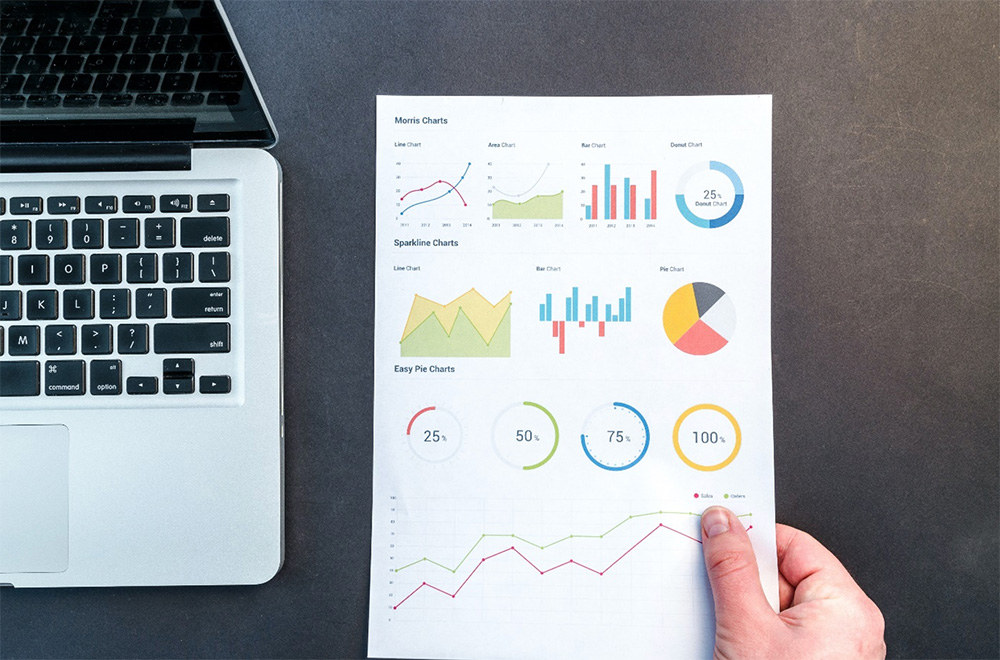The consumer base of any market is the fundamental aspect that drives business. Customers have always been the central focus of all successful businesses, with growth strategies revolving around increasing, retaining, and catering to the needs of the consumer base. It is crucial for businesses to develop strategies that create unique customer experiences. Development of these successful strategies requires understanding that every customer’s needs are unique.
This is the primary reason why customer data plays a vital role in providing companies with key insights regarding their consumer’s behavior and requirements, which can significantly help a business to brand and market itself accordingly.
With the technology available today, businesses of all sizes can easily gather, access, and utilize consumer insights to boost their business. According to research conducted by Harvard Business Review, 58% of the companies say they have seen “a significant increase in customer retention and loyalty as a result of the use of customer analytics.”
Dubai Investment Fund (DIF) Insights point towards consumer data as the most critical variable in the development of effective user interfaces. DIF is a middle-eastern investment initiative focused on transforming investment solutions with advanced insights.
 What is Consumer Data
What is Consumer Data
In general, consumer data refers to the information you collect from your customers while they interact with your business through your website, mobile applications, surveys, social media, marketing campaigns, etc. This can range from basic information such as their name and email address to more detailed information such as their behaviors and transactions.
Types of Consumer Data
A business collects a wide variety of customer data points throughout a buyer’s journey. Considering the volume of these data points, they can be segregated into several categories:
Personal Data
Personal Data can be classified as Personally Identifiable Information (PII) and Non-Personally Identifiable Information (Non-PII):
Personally Identifiable Information (PII) is any data or information regarding the customer that can be used to identify or recognize an individual’s identity. This is further divided into:
1. Linked Information:
It refers to information that can be used to identify an individual without requiring additional information, for e.g.:
- Full name
- Physical address
- Email address
- Login details
- Driver’s license number
- Social security number
- Passport number
- Credit/debit card details
- Date of birth
- Phone number
2. Linkable Information
Any item of information that, when combined with another piece of information, can identify a person but cannot do so on its own is referred to as linkable information, for e.g.:
- First or last name
- Location — Country, state, city, ZIP code
- Gender
- Race and ethnicity
- Age group
- Job details
Non-Personally Identifiable Information (Non-PII) refers to data that is anonymous and cannot be used to identify a specific individual. Non-PII examples consist of:
- IP addresses
- Cookies
- Device IDs
Engagement Data
Data on consumer engagement reveals how they engage with your brand through various marketing channels. This data consists of details about how customers use your website, how they communicate with you on social media and through customer service, and other such behaviors. The channels’ inclusions include:
- Website and Mobile App Interactions: Website visits, App stickiness, Most viewed pages, User flow, Traffic sources, etc.
- Social Media Engagement: Post likes, Post shares, Post replies, Native video views, etc.
- Email Engagement: Open rate, Click-through rate, Bounce rate, Email forwards, etc.
- Customer Service Information: Number of tickets, Complaint/Query details, Feedback, etc.
- Paid Ad Engagement: Impressions, Click-through rate, Cost per click/mille, Conversions, etc.
Behavioral Data
Utilizing behavioral data, you can find hidden trends that your clients exhibit throughout the buying process. Behavioral data may or may not include engagement data. This information can be collected by:
- Transactional Data: Subscription details, Purchase details, Previous purchases, Average order value, Cart abandonment data, Average customer lifetime value, Customer loyalty program details, etc.
- Product Usage: Repeated actions, Feature usage, Feature duration, Task completion, Devices, etc.
- Qualitative Data: User attention, Heatmaps (clicks, scroll, mouse movement data), etc.
Attitudinal Data
The emotions and feelings of your clients influence your attitudinal data. It is how customers view your brand and products. It is advisable to integrate attitudinal data with quantitative data because this data tends to be qualitative and subjective, making it difficult to provide specific results. Surveys, interviews, focus groups, customer complaints, feedback, reviews, and other methods are frequently used to gather attitudinal data. It includes:
- Customer satisfaction
- Sentiments
- Product desirability
- Preferences
- Motivations and challenges
- Purchase criteria
 Utilizing Consumer Data to Improve Experience
Utilizing Consumer Data to Improve Experience
According to a report called “Customer Engagement Analytics: Take the Right Step, Every time” by Aberdeen Strategy and Research, 95% of businesses have trouble in utilizing customer data efficiently. This indicates that merely collecting customer information is not enough. This complied data needs to be translated into increasing productivity, sales and customer service. Without a strategy for utilizing the gathered data, potentially useful insights will remain locked up in analytics reports, spreadsheets, and CRM.
Consumer Insight can be effectively used to:
Lower Customer Acquisition Cost
The Customer Acquistion Cost (CAC) is one of the most essential variables that businesses need to monitor. CAC can be defined as the complete cost of making a sale to a customer, from introducing the product to finalizing the deal.
A lower CAC can improve growth in business and allows the business to save money at the same time. For example, if an enterprise is using paid ads to drive traffic to the various pages of its website, they can check their Google Analytics account to determine which page has a greater conversion rate. The company can then rework its strategy to direct all of its traffic to the page with the highest conversion rates for better outcomes and a lower CAC.
Improve Marketing Strategy
Customer data can be utilized to effectively reduce or eliminate unnecessary market spending through different ways. For instance, personalized marketing campaigns can be initiated for the consumer base. Customer data acquired from Google Analytics and Facebook Insights, can assist businesses in learning more about their customers, such as their demographics, interests, and behaviors. Customers can then be segmented so personalized messages can be sent, making them more relevant as well as eye-catching.
Organizations can also check their top traffic sources in Google Analytics to understand and learn more about where to focus their efforts.
Improve Customer Experience
Information provided by customers through feedback surveys and online reviews can be quite impactful, as it can help in determining ways to provide a more smooth and effortless experience for the customers. Through these surveys and reviews, consumers will reveal exactly what they want and need, thus their ideas can be implemented, and difficult processes can be taken care of. Google Analytics can also be used to better the online customer experience. For example, if the product education page on a business website has a high exit rate, it might be due to excessive information that is confusing for the customer. It should be A/B tested to keep users around for a longer time period and increase conversions.
Customer purchasing data can also be shared with suppliers to ensure availability of products that consumers want to buy. It has been observed that local marketplaces flourish when brick and mortar shops use data from consumer purchases to tailor product selection and inventory.
In addition to this, data may be organized more logically and made searchable by using data governance. As a result, throughout the service lifecycle, customer-facing staff will have accurate and relevant customer data, enabling them to obtain the needed details more quickly and provide services more efficiently.
Increase Sales
The ultimate goal any business is increase its sales and generate more revenue and profits. Customer data can be used to accurately predict the purchasing behavior of consumers and provide product recommendations that are in line with customer requirements. By analyzing consumer data, offers can be sent to customers that will guarantee a boost in sales. According to Gallup, “companies that apply the principles of behavioral economics outperform their peers by 85% in sales growth and more than 25% in gross margin.”
Identify and Rectify Bottlenecks
The evaluation and analysis of consumer data is essential for any business since it enables you to identify any operational bottlenecks. Gathering this data, helps provide insights to businesses to identify the troublesome stages of service delivery so they can modify it for future implementation, for example, if customer satisfaction declines.
Promote Collaboration through Companywide Analytics Access
Growth and scaling efforts can be encouraged across the entire business by making analytics tools and visualizations available to everyone, especially in areas where teams interact with one another. Teams can benefit from understanding how the work of one team affects the work of another, thereby improving optimization and collaboration.
Explore Areas of Growth
Consumer data can be used to quickly determine areas of growth. Increased efforts and focus can then be dedicated to these specific areas of the business. More content can be built around sections of the site that are performing well.
Make Strategic Updates for Websites
Businesses can observe search terms consumers use to locate their websites and analyze the correlation between this and the products customers eventually purchase. Companies can align product descriptions with these search terms and identify new product categories that buyers are interested in to broaden the product selection.
 Why Consumer Data Matters
Why Consumer Data Matters
According to DIF, consumer data forms an integral part of the foundation of any business as it provides an in-depth insight into the customer experience. Customer engagement channels can be better understood, and future buying behaviors can be projected. Customer data goes beyond the buying decision and helps illuminate the underlying elements that influence a consumer’s decision-making. Every piece of data that is part of this engagement paradigm contributes to the subsequent engagement. This leads to the development of an iteratively developing customer model that improves the standards of customer service with each interaction.
As this is the era of digitalization, accessing data is not difficult. However, the main challenge lies in revealing the underlying patterns in the data to create enhanced profiles that can provide insights into client preferences. Every customer has a distinct set of preferences that can aid businesses in making wiser choices.
Significance of Trust in Data Management
According to a DIF survey pertaining to consumer trust, only 12% of customers have expressed their trust in consumer good brands that they engage with. On the other hand, the EY Future Consumer Index observes that consumer trust is hard to acquire. As part of this survey by EY around customer sentiments, when consumers were asked about the level of trust they currently have in various companies, only 10% of US consumers completely trust online-only retailers and chain retailers, while only 13% completely trust CPG (consumer packaged goods) brands.
Thus, it can be fairly said that the significance of trust cannot be understated, which is why retailers and businesses need to be extremely mindful on how they obtain customer data and how they utilize it. As interactions between consumers and businesses grow, the risk of losing trust grows accordingly. The foundation of effective customer relationships is built on this trust between the consumer and the brand. Understanding each other’s working dynamics is crucial for both parties involved.
It is essential for customers to know that organizations are adhering to responsible data handling protocols and this trust is vital for companies before acquiring customer data. Businesses should deliver a clear value proposition when providing customer data to other organizations. The best way for brands to deliver value and capitalize on their core value propositions is through relevant digital experiences.
The significance of trust in digital relationships is crucial as even a small reputational impact can harm relationships. Thus, it is important for retailers to develop strict policy structures so that their data handling and management procedures are properly communicated to their customers.
 Integrated Consumer Data Will be Critical in Digital Markets
Integrated Consumer Data Will be Critical in Digital Markets
Companies must have integrated consumer data if they want to prosper in the competitive digital market of today. Effective data utilization can play a significant role in a company’s success and ability to expand their outreach. Companies can use consumer data to learn more about consumer preferences, behavioral triggers, and underlying trends. Organizations must create effective data interpretation processes if they want to clearly understand consumers. Although navigating data handling might be complex, DIF research emphasizes on the value of transparent data handling practices to uphold consumer confidence throughout the process.












